Disrupted endoplasmic reticulum-mediated autophagosomal biogenesis in a Drosophila model of C9-ALS-FTD
- PMID: 37599467
- PMCID: PMC10761023
- DOI: 10.1080/15548627.2023.2249750
Disrupted endoplasmic reticulum-mediated autophagosomal biogenesis in a Drosophila model of C9-ALS-FTD
Abstract
3R: UAS construct expressing 3 G4C2 repeats (used as control); 3WJ: three-way junction; 12R: UAS construct expressing leader sequence and 12 G4C2 repeats; 30R: UAS construct expressing 30 G4C2 repeats; 36R: UAS construct expressing 36 G4C2 repeats; 44R: UAS construct expressing leader sequence and 44 G4C2 repeats; ALS: amyotrophic lateral sclerosis; Atg: autophagy related; atl: atlastin; C9-ALS-FTD: ALS or FTD caused by hexanuleotide repeat expansion in C9orf72; ER: endoplasmic reticulum; FTD: frontotemporal dementia; HRE: GGGGCC hexanucleotide repeat expansion; HSP: hereditary spastic paraplegia; Lamp1: lysosomal associated membrane protein 1; MT: microtubule; NMJ: neuromuscular junction; Rab: Ras-associated binding GTPase; RAN: repeat associated non-AUG (RAN) translation; RO-36: UAS construct expression "RNA-only" version of 36 G4C2 repeats in which stop codons in all six reading frames are inserted.; Rtnl1: Reticulon-like 1; SN: segmental nerve; TFEB/Mitf: transcription factor EB/microphthalmia associated transcription factor (Drosophila ortholog of TFEB); TrpA1: transient receptor potential cation channel A1; VAPB: VAMP associated protein B and C; VNC: ventral nerve cord (spinal cord in Drosophila larvae).
Keywords: Autophagy; C9-ALS-FTD; Drosophila; axonal transport; endoplasmic reticulum (ER) dynamics; motor neuron.
Conflict of interest statement
No potential conflict of interest was reported by the authors.
Figures
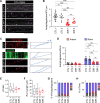
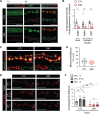

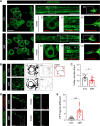

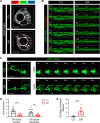
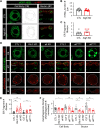
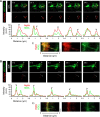

Similar articles
-
C9orf72 ALS-FTD: recent evidence for dysregulation of the autophagy-lysosome pathway at multiple levels.Autophagy. 2021 Nov;17(11):3306-3322. doi: 10.1080/15548627.2021.1872189. Epub 2021 Feb 26. Autophagy. 2021. PMID: 33632058 Free PMC article. Review.
-
TFEB/Mitf links impaired nuclear import to autophagolysosomal dysfunction in C9-ALS.Elife. 2020 Dec 10;9:e59419. doi: 10.7554/eLife.59419. Elife. 2020. PMID: 33300868 Free PMC article.
-
RNA dependent suppression of C9orf72 ALS/FTD associated neurodegeneration by Matrin-3.Acta Neuropathol Commun. 2020 Oct 31;8(1):177. doi: 10.1186/s40478-020-01060-y. Acta Neuropathol Commun. 2020. PMID: 33129345 Free PMC article.
-
The carboxyl termini of RAN translated GGGGCC nucleotide repeat expansions modulate toxicity in models of ALS/FTD.Acta Neuropathol Commun. 2020 Aug 4;8(1):122. doi: 10.1186/s40478-020-01002-8. Acta Neuropathol Commun. 2020. PMID: 32753055 Free PMC article.
-
Insights into C9ORF72-Related ALS/FTD from Drosophila and iPSC Models.Trends Neurosci. 2018 Jul;41(7):457-469. doi: 10.1016/j.tins.2018.04.002. Epub 2018 May 2. Trends Neurosci. 2018. PMID: 29729808 Free PMC article. Review.
Cited by
-
Decoding Nucleotide Repeat Expansion Diseases: Novel Insights from Drosophila melanogaster Studies.Int J Mol Sci. 2024 Nov 2;25(21):11794. doi: 10.3390/ijms252111794. Int J Mol Sci. 2024. PMID: 39519345 Free PMC article. Review.
-
Flight to insight: maximizing the potential of Drosophila models of C9orf72-FTD.Front Mol Neurosci. 2024 Jun 10;17:1434443. doi: 10.3389/fnmol.2024.1434443. eCollection 2024. Front Mol Neurosci. 2024. PMID: 38915937 Free PMC article.
-
Use of Mesenchymal Stem Cell-Targeting 3WJ Nanoparticles and Reported Specific Delivery of Anti-miRNA 138 to Treat Osteoporosis.ACS Omega. 2025 Mar 4;10(10):10633-10641. doi: 10.1021/acsomega.4c11505. eCollection 2025 Mar 18. ACS Omega. 2025. PMID: 40124010 Free PMC article.
-
Understanding Amyotrophic Lateral Sclerosis: Pathophysiology, Diagnosis, and Therapeutic Advances.Int J Mol Sci. 2024 Sep 15;25(18):9966. doi: 10.3390/ijms25189966. Int J Mol Sci. 2024. PMID: 39337454 Free PMC article. Review.
-
Compartmentalized regulation of organelle integrity in neurodegenerative diseases: lessons from the Drosophila motor neuron.Neural Regen Res. 2025 Jan 1;20(1):195-196. doi: 10.4103/NRR.NRR-D-23-01753. Epub 2024 Apr 3. Neural Regen Res. 2025. PMID: 39657087 Free PMC article. No abstract available.
References
-
- Komatsu M, Waguri S, Chiba T, et al. Loss of autophagy in the central nervous system causes neurodegeneration in mice. Nature. 2006. Jun 15;441(7095):880–884. - PubMed
Publication types
MeSH terms
Substances
Grants and funding
LinkOut - more resources
Full Text Sources
Other Literature Sources
Medical
Molecular Biology Databases
Research Materials
Miscellaneous
